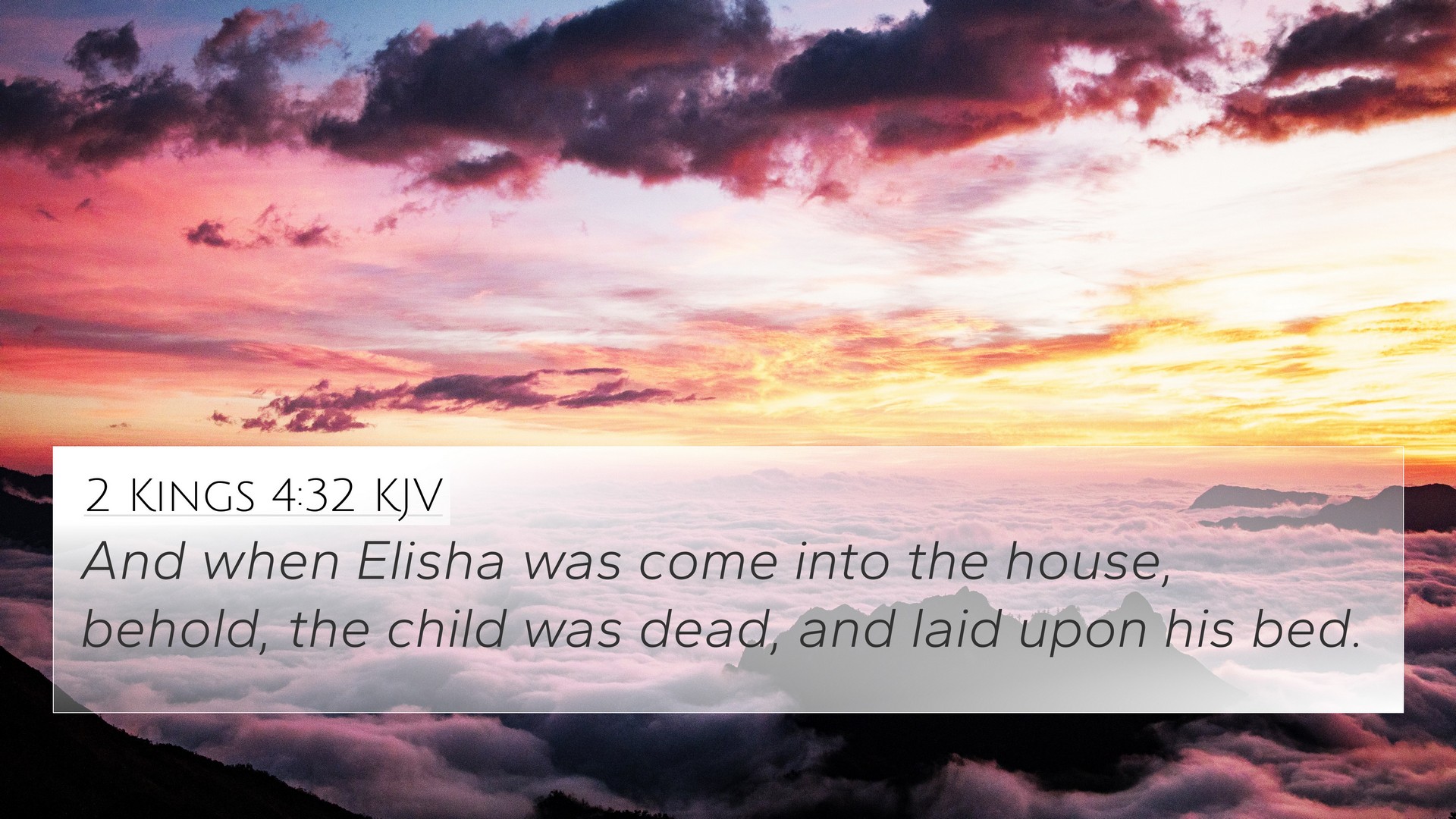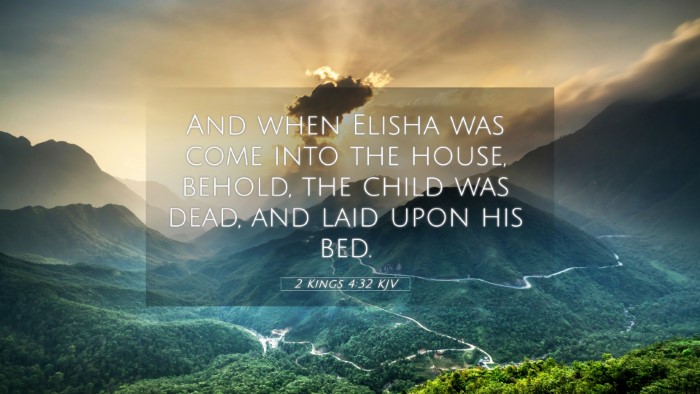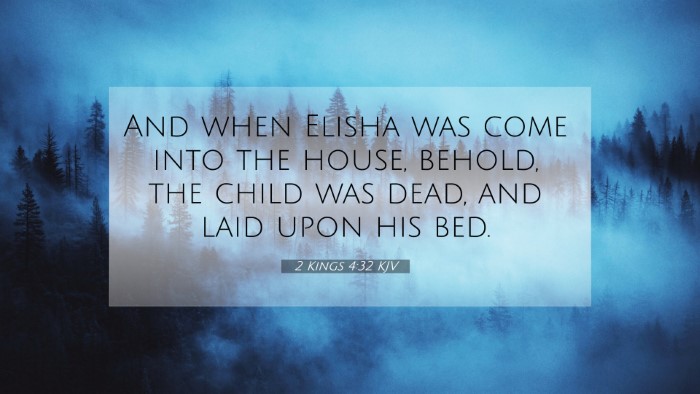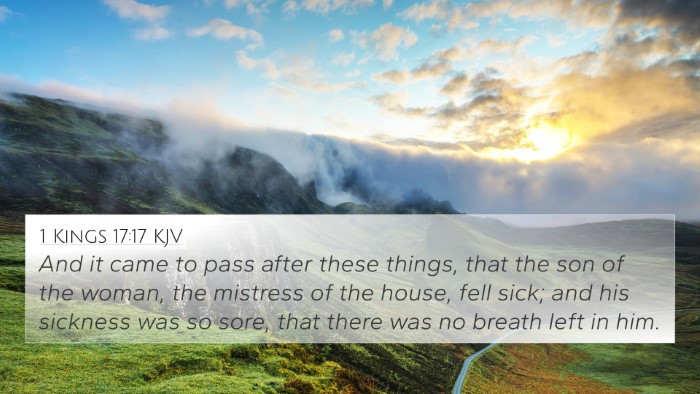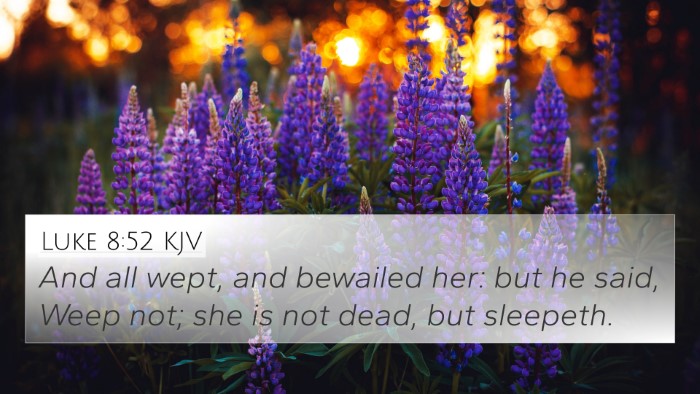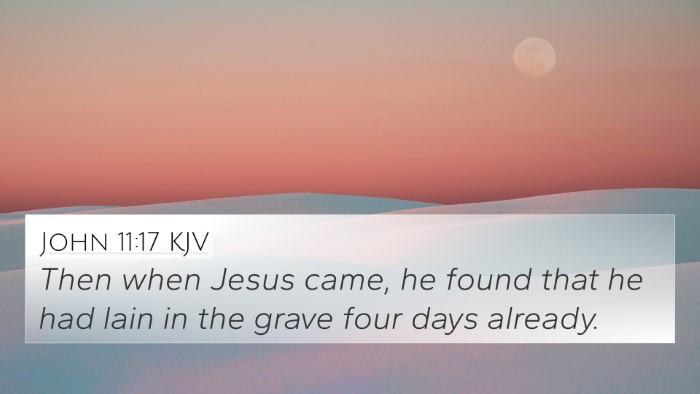Understanding 2 Kings 4:32
2 Kings 4:32 reads: "When Elisha came into the house, there was the child lying dead on his bed." This verse marks a significant moment in the story of Elisha, the prophet, and the Shunammite woman who had shown him hospitality.
Summary of the Verse
This passage highlights the arrival of Elisha at the Shunammite's home where he encounters the lifeless body of the child whom he had earlier promised would be born to the woman. His dead state signifies a profound sense of loss and the culmination of earlier hope.
Commentary Insights
-
Matthew Henry:
Henry emphasizes the disruption caused by tragedy and how it arrives even after moments of divine promise. He notes the importance of Elisha's role in interceding for the child, reminding readers of the broader implications of faith and the miraculous power of God in seemingly hopeless situations.
-
Albert Barnes:
Barnes focuses on the emotional aspects of the narrative, highlighting the overwhelming grief of the Shunammite woman. He draws out themes of faith and desperation, illustrating how she sought out Elisha, knowing he was the prophet who could intervene on her behalf.
-
Adam Clarke:
Clarke discusses the prophetic calling of Elisha and his commitment to helping those in distress. He emphasizes the importance of the miraculous works that follow Elisha and explores the implications of faith in God’s providential care.
Bible Cross-References
This verse connects with several other biblical passages that underscore themes of resurrection, faith, and divine intervention:
- 1 Kings 17:17-24: Elijah raises the widow's son, paralleling Elisha's upcoming miracle.
- 2 Kings 4:34-35: Elisha's actions following this verse where he revives the child.
- Luke 7:11-15: Jesus raises the widow of Nain's son, echoing the theme of resurrection.
- Matthew 9:18-26: Jesus restores life to a ruler's daughter, highlighting His authority over death.
- John 11:1-44: The raising of Lazarus, demonstrating the power of Jesus over death.
- Hebrews 11:35: References to women receiving their dead raised to life, showcasing the continuing thread of miracles.
- Mark 5:21-43: The account of Jesus and Jairus' daughter, emphasizing faith in dire situations.
Thematic Connections
Exploring the cross-references reveals the depth of inter-Biblical dialogue regarding life, death, and faith in divine intervention.
-
Miraculous Resurrections:
Many of Elisha's miracles, including the one in this passage, prefigure the resurrection themes seen in the New Testament, especially in the life of Jesus.
-
Faith and Suffering:
The Shunammite woman's faith, even in her distress, highlights a recurring biblical theme where human grief is met with divine hope.
-
Prophetic Authority:
Elisha’s role as a prophet who brings life contrasts with the reality of death, showing a deeper connection between the prophetic ministry and the acts of God.
Tools for Bible Cross-Referencing
If you are looking to delve deeper into cross-referencing Bible verses, consider the following:
- Bible Concordance: A vital tool for locating scriptures by keywords.
- Bible Cross-Reference Guide: Helps to identify related verses and themes quickly.
- Cross-reference Bible Study: Methods that guide the study of interconnected scriptures.
Conclusion
Understanding 2 Kings 4:32 requires exploring not only the immediate context but also its connections with other scriptures. The verse stands as a touchpoint in a larger biblical narrative that consistently interlinks themes of faith, divine miracles, and the confrontation of death. By examining these connections, readers can gain richer insights into their spiritual journey and the cohesive message of the Bible as a whole.
